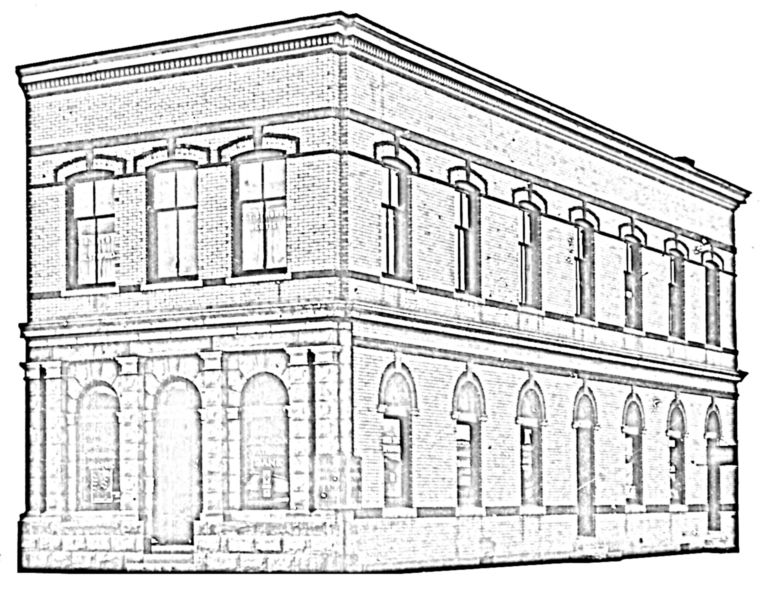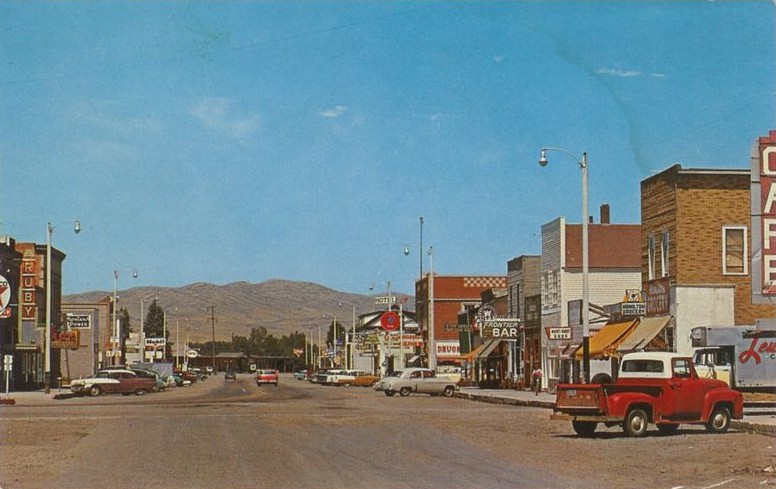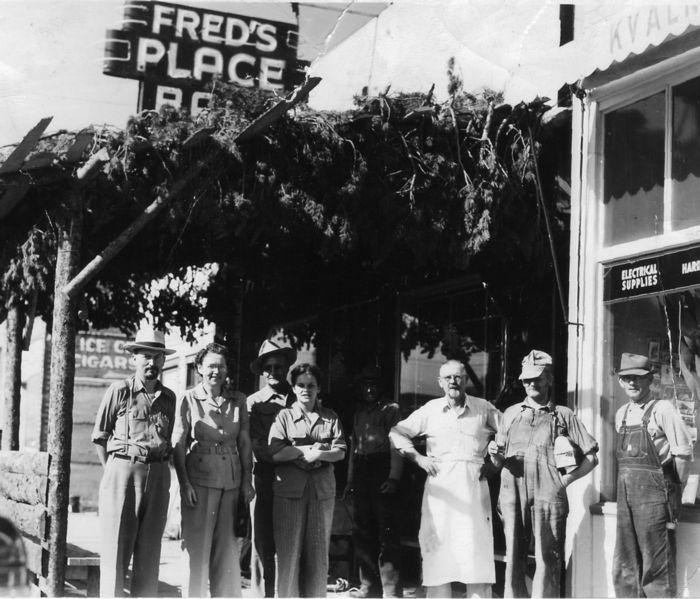When the Lewis and Clark expedition paddled up the Missouri River in July of 1805, at last reaching their first major goal of
finding the three forks, Captain Meriwether Lewis noted in his journal on Saturday, July 27th, 1805
“the limestone appears to be of an excellent quality of deep blue colour when fractured and of a light led colour
where exposed to the weather. It appears to be of a very fine grain the fracture like that of marble.” Over one
hundred years later another explorer and entrepreneur, Don Morrison, surveyed those same formations with an eye toward bringing
a new industry to the area.
The survey was completed in 1907, and Morrison went about filing mining claims and gathering capital to start a cement
manufacturing company. It was the perfect spot to build; near a major railroad with practically unlimited limestone and nearby
access to other raw materials for the cement manufacturing process. He convinced members of the East Butte Mining Company, which held
interest in the Limespur Mine in Jefferson River canyon to invest in building a plant on, what was called at that time, Crawford Flats.
Morrison involved Aman Moore, an engineer who had helped build two other cement plants, and soon found that the capital needed was
too much for his investors. Through Moore, investors were brought in from the Union Portland Cement Company, which had built a cement
plant near the Devil's Slide rock formation at Morgan, Utah, just a year before.
Construction of the Three Forks Portland Cement Company plant began in 1908 with housing for the construction workers. With the
number of men growing, a rail stop and post office were needed, which meant the place had to be named. "Portland" and "Cementville"
were rejected and the village became known as Trident, since the name Three Forks was taken. (A trident is a three pronged spear and in
this context used to represent the three rivers of Gallatin, Madison and Jefferson that form the Missouri River.) The first shipment of their product
was 424 (burlap) sacks of “Red Devil Portland Cement” on June 10th, 1910, purchased by the Missoula Mercantile Company. Soon there
were six to eight cars per day of cement sacks being shipped, but outbound shipments rose to upwards of 25 to 30 cars. With business
booming, Northern Pacific authorized the construction of a depot for the city of Trident in February 1911. Trident was a company
owned village with 40 cottages and homes, and a hotel, theatre, store, and school on the river side of the Northern Pacific Railroad,
while the office / laboratory, kilns, mills, warehouses and silos were on the east side of the tracks.
The labor intensive industry required a lot of men, so in addition to the village, a shanty town sprang up to the north of the
original plant. At first, Japanese laborers were hired, but a union contract in 1911 restricted Japanese labor. Soon the shanty
town was taken over by European immigrants, mostly Italian and Austrian, and it became known as Little Italy or WOP Town
(without papers). In 1914, Ideal Cement Company, owned mostly by Charles Boettcher, purchased the facilities and
land but retained its identity.
The plant ran at full capacity for eight years, but in 1919, its production was cut to one-third as the effects of the drought that
began in 1916 began to make its way through the Montana economy.
Between 1920 and 1940, the plant continued to produce cement at a rate well below its maximum production capacity, but its
products were used in many of the regional construction projects, including Holter Dam, Morony Dam, the Heart Mountain project in
Wyoming, Fort Peck Dam, Grand Coulee Dam, and Polson Dam.
Working at the plant was one of the best paying jobs in the area, but most were quite dirty and many were dangerous. At least ten
men died in the first decade of its operation, and many more were injured. In the early 1940s, labor interests and a tragic
accident at the plant combined to bring safety to the forefront, and years of "no lost time accidents" became a standard at the
plant.
On July 16, 1946, laborers at the plant received their union charter from the United Cement, Lime and Gypsum Workers International
Union for Local 239, which later merged with the Boilermakers. On January 1, 1948, the Three Forks Portland Cement Company was
consolidated into the nationwide Ideal Cement Company.
By the mid-1950s, good roads and cheap automobiles made commuting appealing. While the rent for company housing was cheap, many
workers pursued the American Dream and purchased their own homes. By the 1960s, the village was less than half occupied. In the
mid-1970s, the post office closed. The last renter moved out of the village in 1996, and all of the homes have now been razed.
In the 80s, Ideal Cement Company could not weather a financial crisis, and much of the business was sold to a Swiss based cement
company. In 1990, the plant at Trident was renamed Holnam, short for Holderbank North America. In 2002, the facility was again
renamed, Holcim (US), Trident Plant, as its parent company reorganized. Between 1990 and 2008, the plant ran at near capacity,
churning out cement products for the booming construction industry.
In 2010 Holcim sold the Trident plant and it was later sold again. The facility is now owned by CRH plc, a building materials
company headquartered in Dublin, Ireland.
On the National Registry of Historic Places
Jesse R. Green Homestead
Trident School
Area History Main Page




